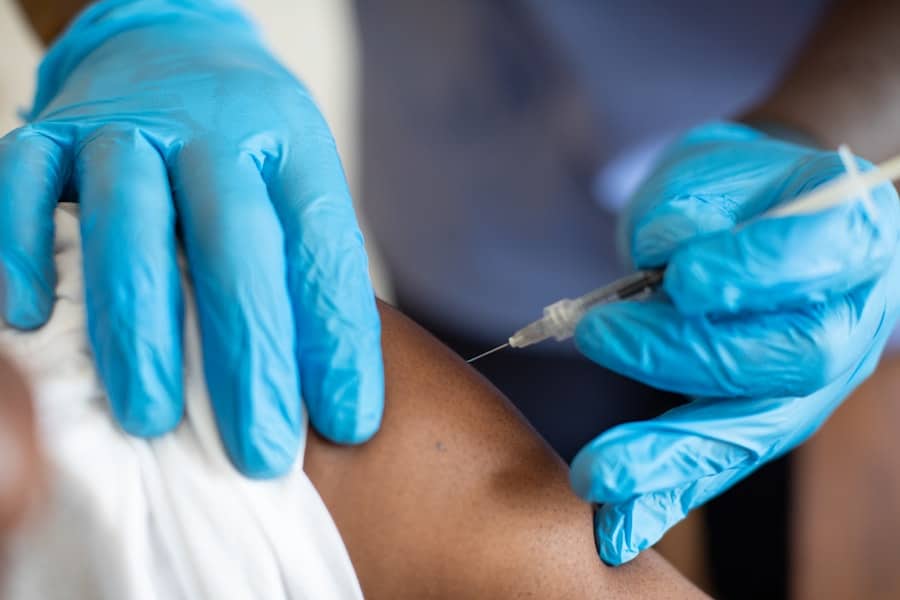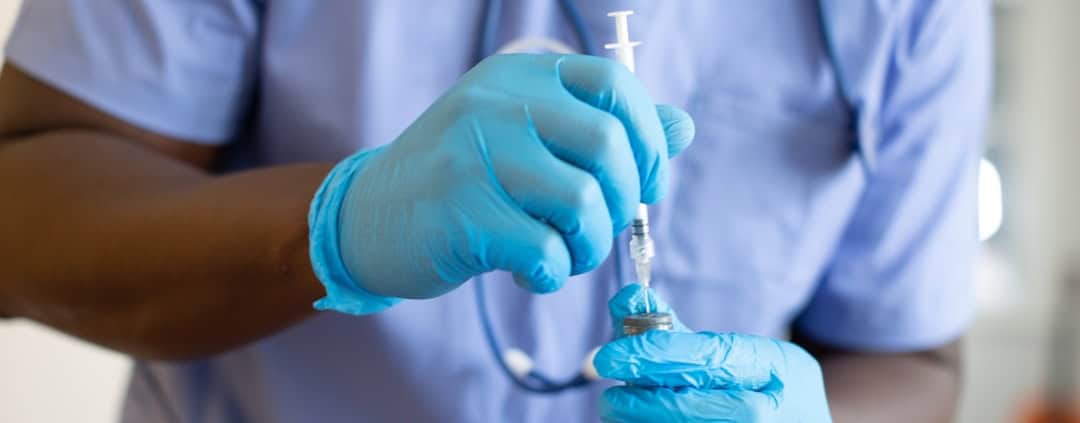Navigating Piercing Pain: Expectations and Preparation
Body piercings are a form of bodily modification involving the puncturing of a body part to create an aperture for the insertion of jewellery. Whilst the pain experienced during a piercing varies amongst individuals, it is essential to understand that some level of discomfort is inevitable. The pain associated with piercing is caused by the perforation of nerve endings in the skin and the body’s natural response to this trauma.
It is crucial to remember that pain is subjective, and what may be intolerable for one person may be manageable for another. It is also worth noting that the pain experienced during a piercing is temporary and will subside once the procedure is complete. The level of pain experienced during a piercing can be influenced by the location of the piercing.
Areas with a higher concentration of nerve endings, such as the nipples or genitals, may be more painful to pierce than areas with fewer nerve endings, such as the earlobes. Furthermore, the skill and experience of the piercer can impact the level of pain experienced during the procedure. A skilled and experienced piercer will be able to perform the piercing swiftly and accurately, minimising the duration of discomfort.
It is important to maintain realistic expectations regarding the pain involved in obtaining a piercing and to be prepared for some level of discomfort during the process.
Summary
- Piercing pain varies depending on the individual’s pain tolerance and the location of the piercing
- It’s important to have realistic expectations about the level of pain and healing time for different piercings
- Choosing a professional piercer with experience and a clean, sterile environment is crucial for a successful piercing experience
- Mental and emotional preparation, such as managing anxiety and fear, is key to reducing the perception of pain during the piercing process
- Physical preparation, such as getting enough rest and staying hydrated, can help reduce pain and promote healing after getting a piercing
- Proper aftercare and pain management techniques, such as cleaning the piercing and using pain relief methods, are essential for preventing complications and reducing pain
- It’s important to seek professional help if unexpected pain or complications arise after getting a piercing
Setting Realistic Expectations
Location, Location, Location
It is also essential to consider the location of the piercing, as some areas of the body may be more sensitive than others. Setting realistic expectations about the discomfort involved in getting a piercing can help to mentally prepare for the experience.
The Aftercare Process
While the initial piercing may be uncomfortable, there may also be some discomfort during the healing process. It is essential to be prepared for potential soreness, swelling, and tenderness in the days and weeks following the piercing.
Mental Preparation
By setting realistic expectations about the discomfort involved in getting a piercing, it can help to mentally prepare for the experience and make the process more manageable.
Choosing the Right Piercing Professional

When getting a piercing, it is crucial to choose a professional piercer who is skilled, experienced, and reputable. A professional piercer will have the knowledge and expertise to perform the piercing safely and accurately, minimising the risk of complications and unnecessary pain. It is important to research potential piercers and look for reviews and recommendations from previous clients.
Additionally, it is important to ensure that the piercer follows proper hygiene and sterilisation practices to reduce the risk of infection and other complications. It is also important to consider the environment in which the piercing will take place. A clean and professional studio will provide a safe and comfortable setting for the piercing procedure.
A professional piercer will also take the time to discuss the process with you, answer any questions or concerns you may have, and provide guidance on aftercare and pain management. By choosing the right piercing professional, you can have peace of mind knowing that you are in good hands and that your piercing experience will be as comfortable and pain-free as possible.
Preparing Mentally and Emotionally
| Aspect | Metric |
|---|---|
| Self-reflection | Number of minutes spent reflecting on thoughts and emotions |
| Positive affirmations | Number of times positive affirmations were repeated |
| Mindfulness practice | Frequency of engaging in mindfulness exercises |
| Emotional regulation | Number of instances of effectively managing emotions |
Preparing mentally and emotionally for a piercing is just as important as preparing physically. It is normal to feel nervous or anxious before getting a piercing, especially if it is your first time. Taking some time to mentally prepare for the experience can help to alleviate some of these feelings and make the process more manageable.
It can be helpful to talk to friends or family members who have experience with piercings, or to seek out information and resources online to learn more about what to expect. It can also be helpful to visualise the piercing process and imagine yourself going through it calmly and confidently. Practising deep breathing or relaxation techniques can also help to calm nerves and reduce anxiety before getting a piercing.
It is important to remember that it is okay to feel nervous or anxious, and that it is normal to experience some level of discomfort during the process. By preparing mentally and emotionally for a piercing, it can help to make the experience more positive and less daunting.
Physical Preparation for Piercing Pain
In addition to mental and emotional preparation, there are also physical steps that can be taken to prepare for piercing pain. Ensuring that you are well-rested and hydrated before getting a piercing can help to reduce sensitivity and make the process more comfortable. It is also important to eat a light meal before getting pierced, as low blood sugar levels can increase sensitivity to pain.
Avoiding alcohol and caffeine before getting pierced can also help to reduce sensitivity and make the experience more manageable. It is also important to consider any medications or medical conditions that may impact your pain tolerance or ability to get pierced. It is important to discuss any concerns with your piercer beforehand, as they may be able to provide guidance or make accommodations to ensure your comfort during the process.
By taking physical steps to prepare for piercing pain, it can help to make the experience more comfortable and less daunting.
Aftercare and Pain Management

Following Aftercare Procedures
This may include cleaning the piercing with saline solution or an antiseptic solution as directed by your piercer, avoiding touching or twisting the jewellery, and avoiding activities that may irritate or agitate the piercing site. It is normal to experience some level of discomfort, swelling, or tenderness in the days following a piercing, but following proper aftercare procedures can help to manage these symptoms.
Managing Discomfort
Pain management techniques such as over-the-counter pain relievers or applying a cold compress can also help to alleviate discomfort during the healing process.
Seeking Medical Attention
It is important to follow your piercer’s instructions and seek medical attention if you experience severe or prolonged pain, swelling, redness, or discharge from the piercing site. By following proper aftercare procedures and pain management techniques, it can help to minimise discomfort and promote a smooth healing process.
Dealing with Unexpected Pain or Complications
While it is normal to experience some level of discomfort during and after getting a piercing, it is important to be aware of potential complications that may arise. This may include excessive pain, swelling, redness, discharge, or signs of infection at the piercing site. If you experience unexpected pain or complications, it is important to seek medical attention as soon as possible.
Your piercer may also be able to provide guidance or support in managing unexpected pain or complications. It is also important to follow up with your piercer if you have any concerns about your piercing or if you experience any unexpected pain or discomfort. Your piercer can provide guidance on how to manage symptoms and may recommend adjustments to your aftercare routine or jewellery if necessary.
By being proactive in addressing unexpected pain or complications, it can help to ensure that your piercing heals properly and that any issues are addressed promptly. In conclusion, while getting a piercing may involve some level of discomfort, there are steps that can be taken to prepare mentally, emotionally, and physically for the experience. Choosing a skilled and reputable piercer, setting realistic expectations about piercing pain, following proper aftercare procedures, and seeking support for unexpected pain or complications can all help to make the piercing process more comfortable and manageable.
By taking these steps, you can have peace of mind knowing that you are well-prepared for your piercing experience.
If you’re considering getting a body piercing, it’s important to be prepared for the potential pain levels involved. ThePiercingPlaces.com.au has a helpful blog post that discusses what to expect and how to prepare for the pain of getting a piercing. In addition, they also have a list of the top 10 frequently asked questions about body piercing that can provide valuable information for anyone considering this type of body modification. Check out their website for more helpful tips and advice. The Piercing Places Blog Top 10 FAQs about Body Piercing
FAQs
What are the different pain levels associated with piercing?
There are varying levels of pain associated with different types of piercings. Generally, piercings in areas with more nerve endings, such as the nose or genitals, tend to be more painful than those in areas with fewer nerve endings, such as the earlobes.
How can I prepare for the pain of getting a piercing?
To prepare for the pain of getting a piercing, it’s important to ensure that you are well-rested and have eaten a meal beforehand. It’s also helpful to practice deep breathing or relaxation techniques to help manage any discomfort during the piercing process.
What can I expect in terms of pain during and after getting a piercing?
During the piercing process, you can expect to feel a sharp, stinging sensation as the needle goes through the skin. After the piercing, you may experience some soreness, swelling, and tenderness in the area for a few days. It’s important to follow aftercare instructions provided by your piercer to help manage any discomfort and promote healing.
Are there any pain management techniques I can use during the piercing process?
Some people find that taking over-the-counter pain medication, such as ibuprofen, before getting a piercing can help manage any discomfort. Additionally, focusing on deep breathing or engaging in conversation with your piercer during the process can help distract from the sensation of pain.
How can I determine if I have a low pain tolerance for piercings?
Individual pain tolerance can vary greatly, so it’s important to consider your own experiences with pain in the past. If you have a history of finding medical procedures or injuries particularly painful, you may have a lower pain tolerance for piercings. It’s always best to communicate any concerns about pain tolerance with your piercer before getting a piercing.



